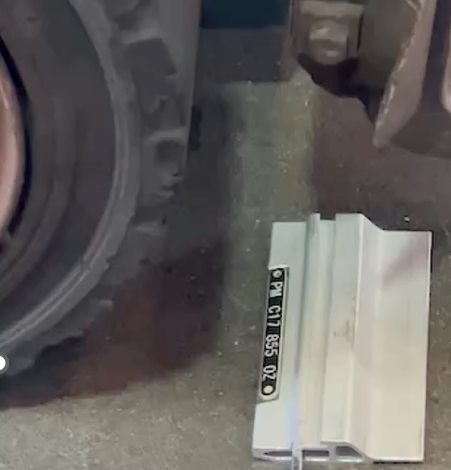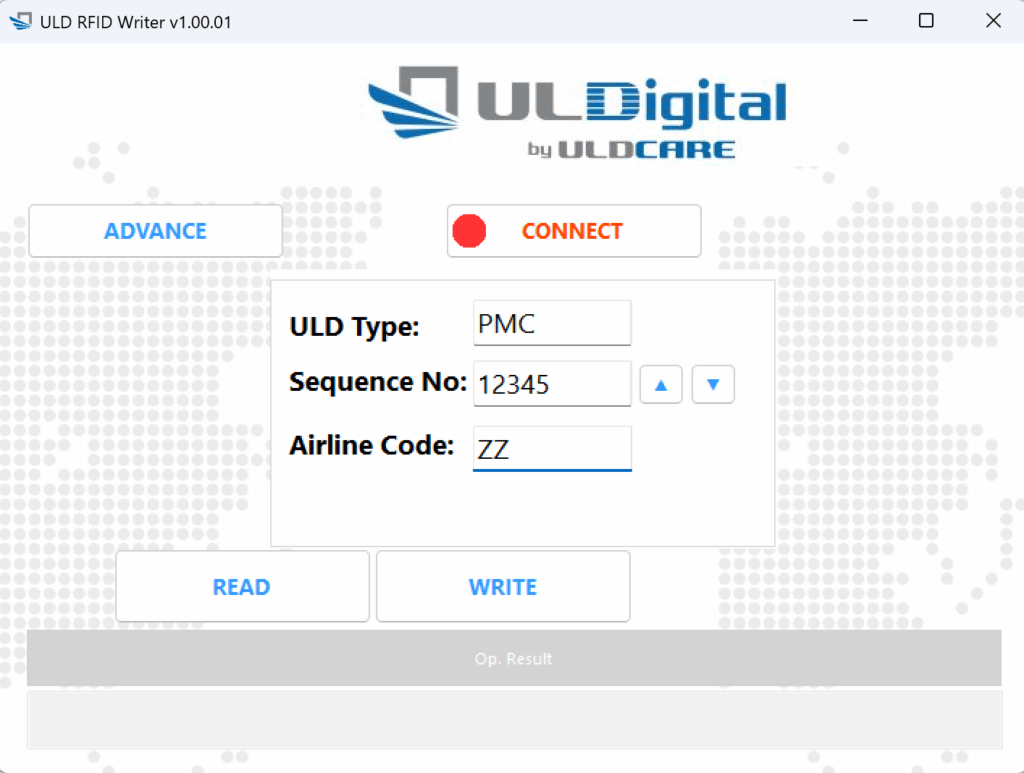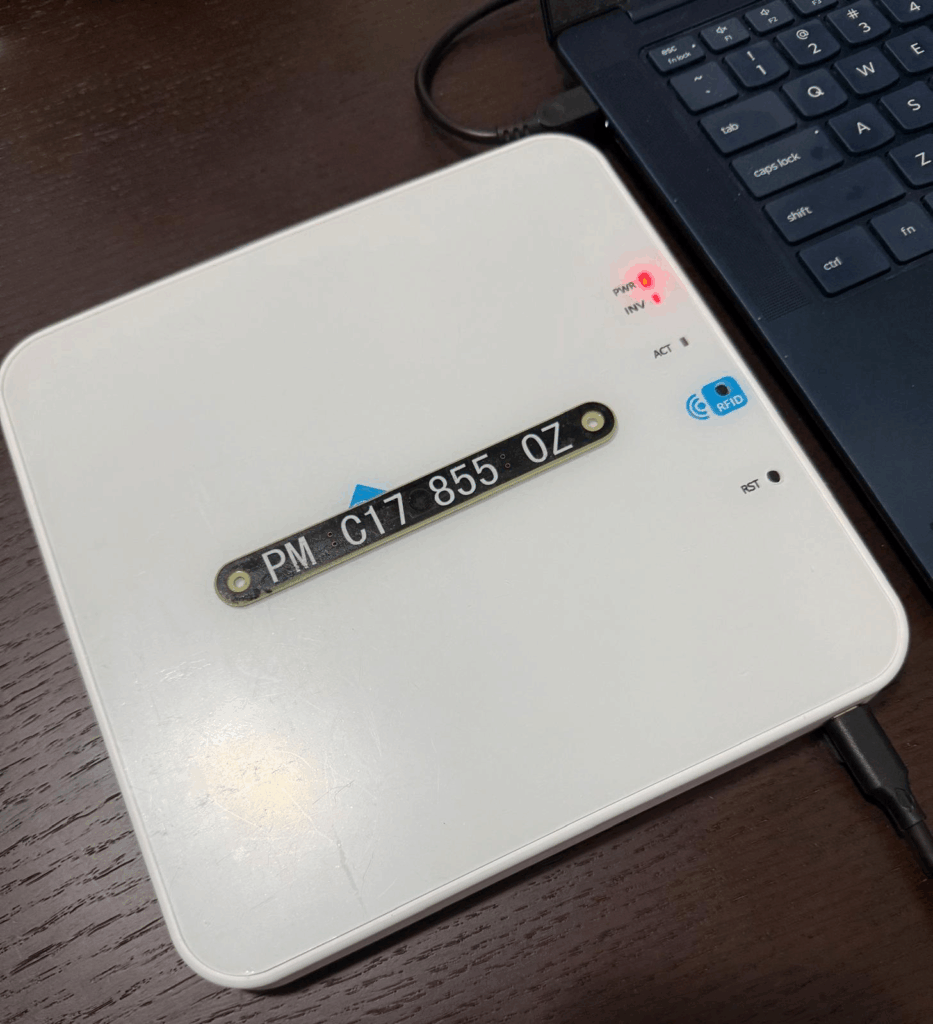Overview

ULDigital has been investigating usage of RFID tags as part of the digitization process of the ULD. This is not a competing product or technology to other technology solutions that are specifically designed to solve other ULD challenges and are developed and marketed by other ULD Care members and associates.
For 50 years ULD have been manually managed with human involvement in identifying and documenting the ULD ID, often incorrectly due to a range of issues including where the tags have been so damaged as to be unreadable.
With the inclusion of a RFID tag, the challenge can be improved using readily available scanners and integrating to the e-UCR suite of tools.


RFID as a solution
The matrix shown here outlines the benefits RFID demonstrates in comparison to other low-end solutions.


Use Cases
The use cases that ULDigital have identified and are currently working with organizations to use include:
- Transfer of Control (E-UCR system)
- Stock Control (Commercially Available 3rd Party Applications)
- Load Verification (Load Master 3rd Party Applications)
- Smart Warehouses (ULDigital working with 3rd Party Service Providers)
Local Access
RFID Tags are designed to replace the metal tags currently installed on pallets. In addition, they offer superior performance to bar codes, QR codes and OCR. The most notable benefits are:
- Accuracy
- Data Storage
- Read / Write
- No Line of Sight Required
The initial purpose for the RFID tags was to offer a digital solution that aids in the transfer of control and replace paper UCR. However, due the ULDigital RFID tag’s ability to store information directly into the tag it provides the ability for IT solutions to work with only local access (no internet access). This is useful in locations where internet access is not available such as warehouses and inside the aircraft cargo bay.
Functional Details
Key Benefits
- Non-Proprietary Solution Designed to Replace Metal Tags
- Passive RFID does not interfere with airplane avionics
- Designed to work on metal from 1 meter away
- Shaped to fit in pallet recess area
- Program ULD ID and other data (i.e. manufacture date)
- Uses latest RFID chip with available memory
- Secure ULD ID and later other data as required
- Works with ULDigital e-UCR mobile app for transfers
- Laser etched tag reveals white lettering
- 3.5mm holes with recess area on each end for rivets
- 3M Adhesive on the back
- ULD CARE R&D investment makes tags low cost and available for all members
- Handles rough treatment and extreme environmental conditions

Technical Details

Type & Compliance
- Tag Type: Passive UHF RFID
- Standard Compliance:
- EPCglobal Gen2v2
- ISO/IEC 18000-63
Frequency
The RFID chip is designed to operate across the full UHF spectrum of 860–960 MHz, which means it’s compatible with both:
- US frequency standards: Typically, 902–928 MHz
- European frequency standards: Typically, 865–868 MHz
EPC Memory
EPC Memory: 96 bits (12 ASCII characters). The largest ULD ID is 11 characters
which would fit:
- 3 alphanumeric for the ULD Type,
- 4 to 6 digits for Sequence Number
- 2 alphanumeric for the Airline Code
Ex. PMC123456ZZ (in case 6-digit Sequence Numbers are introduced at a later date.)
The EPC Memory is write-protected to ensure that only authorized parties can update.
User Memory
User Memory: 688 bits (86 ASCII characters can fit), can be used to write discretionary information. This information could be defined as required by the air cargo industry. A couple of examples are shown below:
Stock Control:

- Ownership
- Airline Rental
- Manufacture Date
- ULD Accessory Expiration Dates (i.e. Nets)
Load Verification:
- Load Weight
- Load Contents
- Dangerous Goods
Attachment
RFID Tags offer several attachment options which are:
- 3M Adhesive (build into the tag)
- Installer can use preferred adhesive solution
- 2 x 3mm holes for rivets
Encoding
ULDigital has invested and developed a simple windows-based RFID encoding application that is compatible with the Apulsetech brand of devices. This application is designed to enable the operator to assess if a tag is blank and to write the tag id to the EPC space and password lock the tag ensuring the security that the tag cannot be erased.


Engraving
ULDigital recommends engraving the tag for human eye readability using a OCR Friendly font like Sans, or Helvetica.
Preferred Fonts
Sans-Serif Fonts: These are very reliable due to their clean lines and uniform stroke weight.
- Arial
- Calibri
- Verdana
- Tahoma
- Helvetica
- Consolas (a monospaced font, which some OCR tests have shown to perform very well).
Serif Fonts: Certain standard serif fonts also work well, especially those used for print.
- Times New Roman
- Georgia
Key characteristics of OCR Fonts:
Simple, Unadorned Design: The most accurate fonts are non-decorative, avoiding elaborate serifs (feet), ligatures, or highly stylized strokes that can confuse the OCR software.
Distinct Character Shapes: There must be a clear difference between visually similar characters, such as:
- The capital letter ‘O’ and the number ‘0’.
- The lowercase ‘l’ and the number ‘1’ and the capital ‘I’.
Uniform Stroke Thickness: Characters should have a consistent, medium-to-bold line weight (monolinear) across all parts of the letterform. Very thin or variable stroke weights can lead to breaks in the character when scanned.
Generous Spacing (Kerning and Tracking): Ample space between individual letters and words is crucial. This prevents characters from touching or merging (known as “smudging”), which can cause the OCR engine to read them as a single, incorrect shape.
Large Apertures (Openness): Letters that are partially enclosed (like ‘c’, ‘e’, ‘a’, ‘s’) should have wide, open gaps. Fonts with closed or small apertures can make it difficult for the machine to distinguish between letters like ‘c’ and ‘o’ or ‘e’ and ‘o’.
Monospaced or Wide Proportionally Spaced: Fonts where every character takes up the same amount of horizontal space (monospaced like Consolas) or those that are designed to be widely spaced (like Verdana) often perform well.
Purchasing
ULDigital is offering Blank RFID tags to ULD Care members with a minimum order quantity of 5000.
Tags $3 USD each
Encoding and Engraving can be supplied at a negotiated rate. Please talk to ULDigital representative for more information.
More Information and Contact
To get more information about RFID tag Usage, Purchase, Encoding or Engraving then please contact [email protected] using this link.


